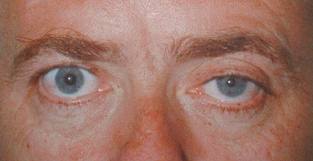Horner's Syndrome
Now here's a side-effect that some doctors do actually warn patients about, and that is Horner's Syndrome. Horner's syndrome usually affects only one side of the face. Common signs and symptoms include:
- A persistently small pupil (miosis)
- A notable difference in pupil size between the two eyes (anisocoria)
- Little or delayed opening (dilation) of the affected pupil in dim light
- Drooping of the upper eyelid (ptosis)
- Slight elevation of the lower lid, sometimes called upside-down ptosis
- Sunken appearance of the affected eye
You need to be aware that doctors only warn you about Horner's Syndrome to make it look as though they are providing you with both the pros and cons of this procedure, where in reality, Horner's Syndrome as a result of ETS is quite rare.
When it does occur, it is immediately evident when patients wake from surgery. However, there have been cases where Horner's Syndrome has appeared after several years as a result of scar tissue building up on the nerve endings where the sympathetic nerve was cut, putting pressure on surrounding nerves and disrupting vital communication channels.
For some lucky patients this does tend to fix itself after about 6-12 months. However, for many, this condition remains with them for the rest of their lives.
